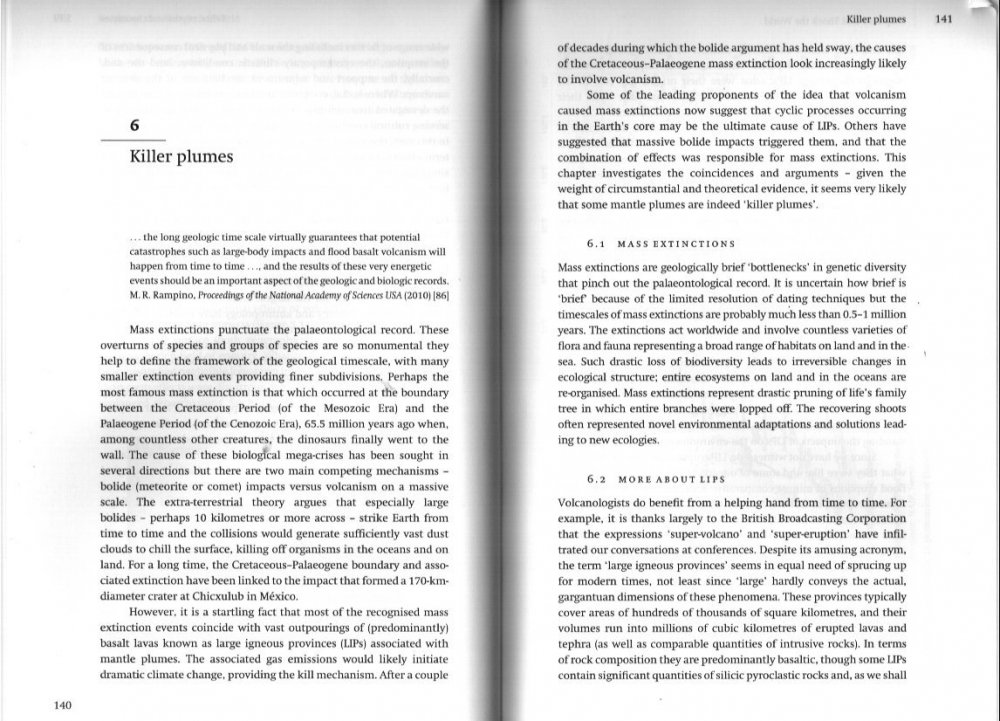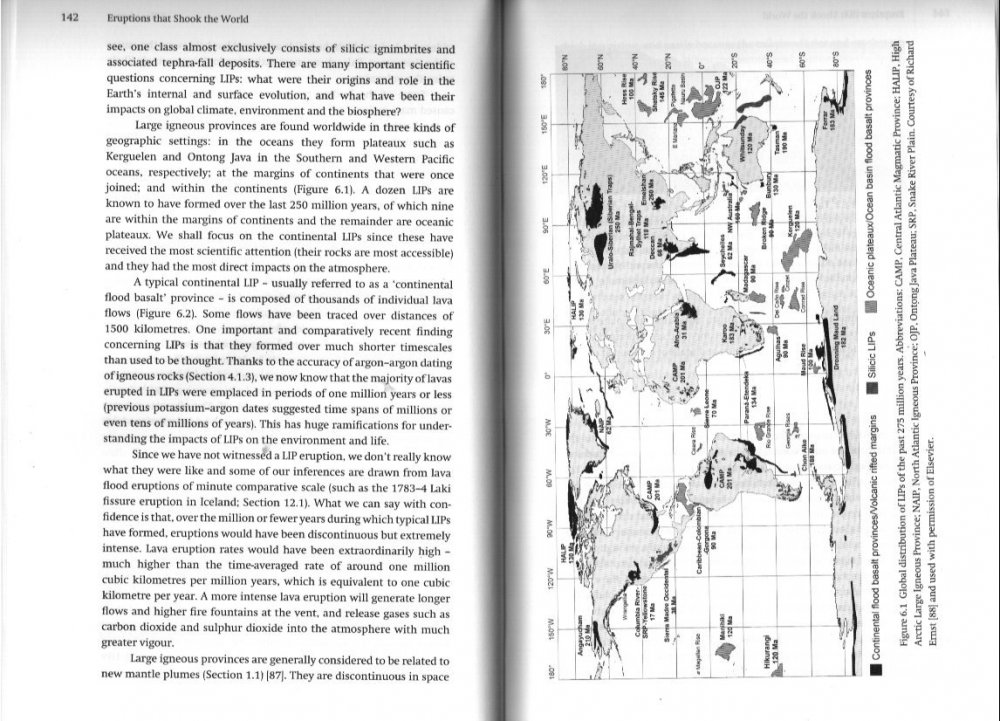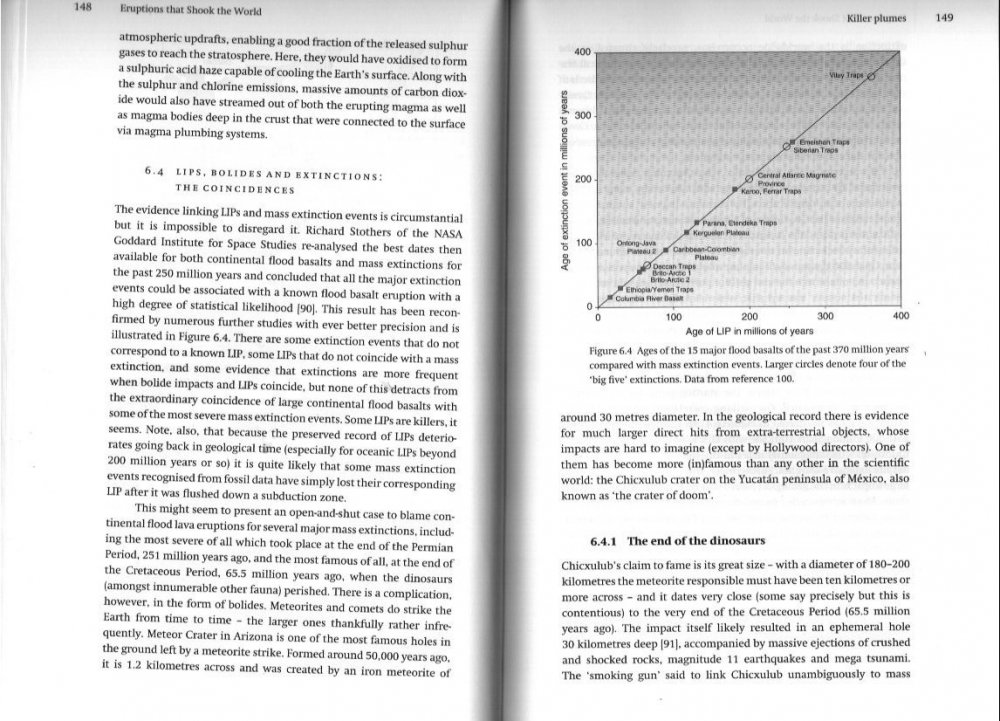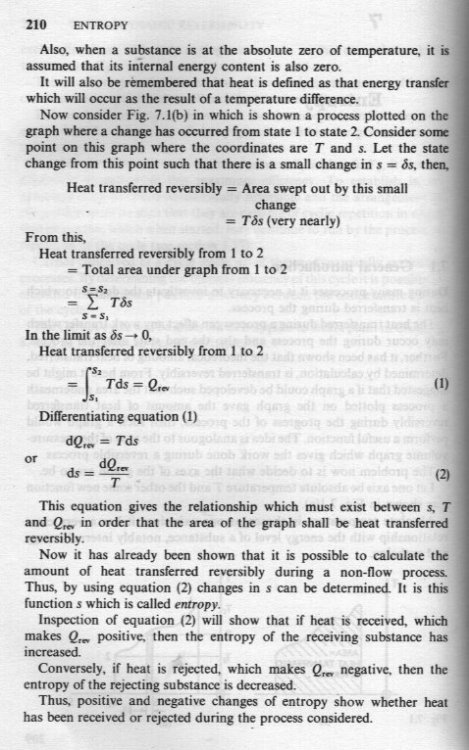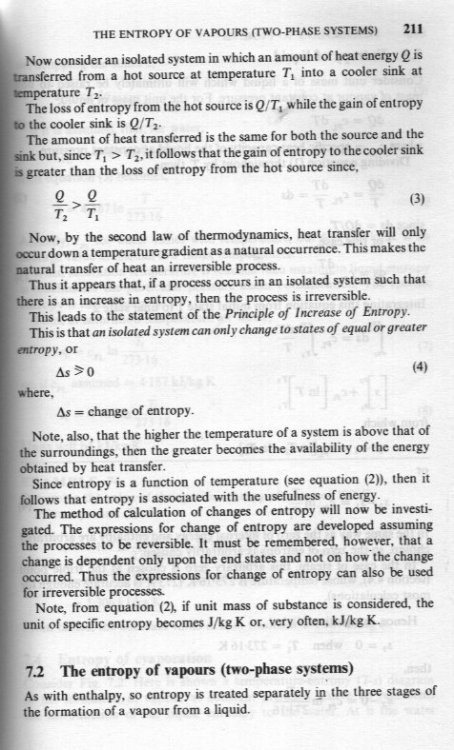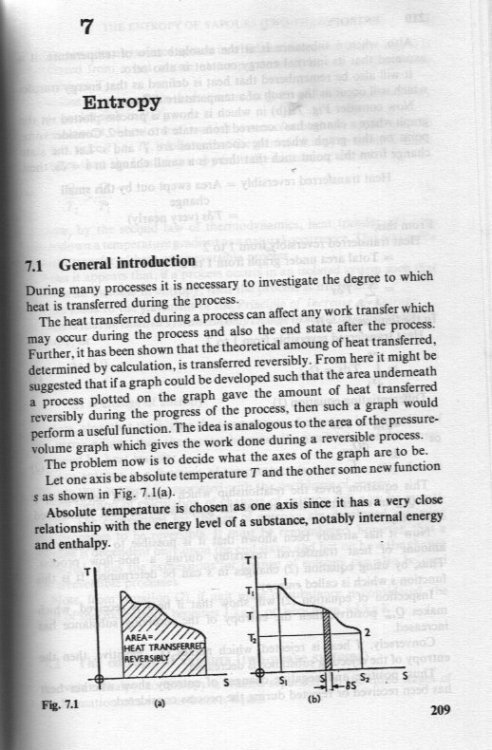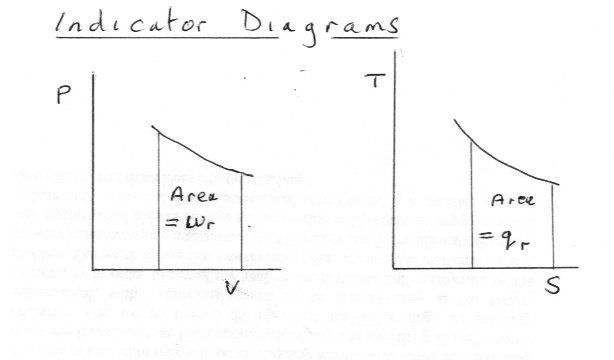-
Posts
18315 -
Joined
-
Last visited
-
Days Won
104
Content Type
Profiles
Forums
Events
Everything posted by studiot
-

Why do shapes with the same area have different perimeter?
studiot replied to King E's topic in Mathematics
There is no definite relationship between the perimeter and the area of a plane figure. There is a maxiumum area that can be enclosed by a given perimeter, given by the circular shape as already noted, but there is no minimum area. But you might like to look at this curiosity. In the plane the perimeter of a figure based on the curves 1/x2 and -1/x2 and the axes is infinite yet the area of that figure is finite. There is an even more impressive 3D version called Gabriel's Horn or trumpet. Here the surface area is infinite yet the volume enclosed is finite. https://en.wikipedia.org/wiki/Gabriel's_Horn The converse situation ie a finite boundary enclosing an infinite area or volume is not possible. -
I understand what you are trying to achieve and it is certainly a speculation or hypothesis. One simple example, worked out fully, is all you need to start a sensible discussion.
-
Exactly what you are not doing in ignoring my question. What are the implications of the (real world) situation where the action and reaction forces are exactly zero?
-
Will Coronavirus finish off coal ? Asks this BBC article on the day the UK has not burned any coal for electricity for 60 days. Apparently it says that India has https://www.bbc.co.uk/news/science-environment-52968716
-
The impact event was effectively instantaneous (though the effects lasted much longer), but the Large Igneous Provinces arise over a million or more years of intermittent outpouring. You should read at least chapter 6 (p140 - 165) of the Oppenheimer book I recommended. Here are a few pertinent pages including some data on the size and penetration depth of the Chixulub impactor.
-
For your specific mass extinction event you should read Micheal Benton's (professor of geology Bristol University) book https://www.amazon.co.uk/When-Life-Nearly-Died-Extinction/dp/0500291934 This details all 5 of the great mass extinctions of the past. But for the OP subject this is the book you want https://www.google.co.uk/search?ei=a5reXsPpE8qJ1fAP1MSXuAM&q=clive+oppenheimer+eruptions+that+shook+the+world&oq=oppenheimer+eruptions&gs_lcp=CgZwc3ktYWIQARgAMgYIABAWEB46BAgAEEc6BQgAEJECOgUIABCDAToFCAAQsQM6AggAOgQIABBDOgcIABCxAxBDOg0IABCxAxCRAhBGEPkBOgcIABCDARBDOgQIABAKOgQIABANOgYIABANEB5QzgxYwD9gxFBoAHABeAGAAeAEiAGKG5IBCzguNy40LjEuMC4xmAEAoAEBqgEHZ3dzLXdpeg&sclient=psy-ab Oppenheimer is reader in vulcanology University of Cambridge. He tabulates all the largest known eruptive events.
-
Why didn't you say so before? So we could stop all this shilly-shallying about? So you have posted in Inorganic Chemistry and asked about reactions. So I take it these are chemical reactions? In Physics the substances in the system are taken as non interactive with each other. That is they don't react chemically because chemical reactions have heats (enthalpies) of reaction to consider. So chemical reactions are more complicated. So I would expect to see statements of the reactants and products. Are the reactants in the two systems the same ? What about the products ? What ends up at the same P1 ,T1 and P2, T2 ? The whole question is best served by some examples. Say for instance mixtures of oxygen and hydrogen, oxygen and carbon monoxide, oxygen and methane...... ? So you have system 1 with reactants A and B in state α and products C and D in state β and system 2 with reactants E and F in state α and products G and H in state β Are P and T sufficient state variables to specify these states ?
-
You didn't answer my question about homework ? I gave you a hint about enthalpy as a state function (for this question) what does that mean and what is your definition of enthalpy?
-
Let me ask again for a proper statement of the question which reads What do you mean by "will it still be the same reaction highest change in enthalpy" ? You haven't said which one has the "highest chnage in enthalpy" So the same as what?
-
In case this is homework , ? here is a hint Enthalpy is a state function so this should answer some question. The question as written in meaningless. What did you mean to say?
-

Primordial life and lower energy state
studiot replied to Rigoletto's topic in Evolution, Morphology and Exobiology
Barbie anyone? -
'irrelevant' to what ? I thought it had meaning and would have introduced you to a physical situation you have not yet considered. Remember also that forces (of any type) are vectors and that vectors have direction. There is much relevance in my question to N3 and a much deeper question.
-

Primordial life and lower energy state
studiot replied to Rigoletto's topic in Evolution, Morphology and Exobiology
We really do need separate laughter points. +1 -
Indeed actionable evidence but it should be remembered that not all conspiracies are bad or evil. Mom and Pop conspire to hide the Christmas / birthday presents from junior unless the event. A conspiracy is simply when two or more persons agree to conceal something from at least one other. Nice one. +1 It's the favourite of policicians and mangers who wish to push through a particular policy stating " There's no evidence to the contrary" when no one has actually looked for any.
-

Primordial life and lower energy state
studiot replied to Rigoletto's topic in Evolution, Morphology and Exobiology
Take a single carbon atom. Set fire to it, in a restricted atmosphere. You now have carbon monoxide, a twice as complicated molecule. Set fire to that in a higher oxygen concentration. You now have carbon dioxide, with 50% more complication. Or consider some molten gold, copper or other metal. Just let it cool. The metal solid that forms is effective one superlarge molecule. Those who promote the idea that everything tends to minimum energy aare journalists, not scientists. A scientist would say Which energy ? That is only true of some forms of energy. And furthermore there is a second driver in the physical universe. That of maximising entropy. Sometimes these two drivers work in the same direction, sometimes they oppose and sometimes only one of them is deployed. -

Primordial life and lower energy state
studiot replied to Rigoletto's topic in Evolution, Morphology and Exobiology
Why do you think that complex molecules are in a higher energy state than an aggregate of simpler ones? -
I posted the 'play' because I don't know if you are asking because you know what entropy is and want to teach it or because you are studying it yourself? So the 'play' was a bit of a middle way. I guess from what you are saying that you are teaching it. Then the main point from the play was that you don't tell them everything at once. Just some basic but important part and let them get used to it before telling them more. In particular I don't know the level of maths available. It is easy to show that entropy is a state variable if they can do cyclic integrals. Otherwise you can just say "This is a state variable and we will come to how and why later" or you could discuss it in the context of the difference between reversible and irreversible changes. You could also note there are many more derived quantities such as Free energy, Chemical Potential and so on depending upon which subject you are teaching it in. You do not need the Second Law - although that came first for historical reasons. If you come to the second law before meeting entropy then the law can be nothing more than a definition for you. Not a Law at all. Here is an Engineering introduction along these lines.
-
The question is rather vague, don't you think? The crust has a widely varying thickness and proximity to magama sources so it partly depends upon where the impact occurs and partly on wht you mean by 'penetrate'. So can you tighten up the detail of the scenario please?
-
Here are some useful links to the Elihu Thompson Experiment. https://www.google.co.uk/search?ei=pR7cXrKxMrPYxgOBwoS4Cg&q=elihu+thomson+experiment&oq=elihu+thomson+experiment&gs_lcp=CgZwc3ktYWIQAzIGCAAQFhAeOgQIABBDOgIIADoICAAQCBANEB5Q7CZY9EFgrkRoAHAAeACAAX6IAZYIkgEEMTAuMpgBAKABAaoBB2d3cy13aXo&sclient=psy-ab&ved=0ahUKEwjyl5eVpO7pAhUzrHEKHQEhAacQ4dUDCAs&uact=5
-
OK so studying Thermodynamics is like watching a good play, film or reading a good book. The actors are introduced and a lttle bit of information is given about them. Enough to know who they are some of their relationship to the other actors and why the audience should be interested in them. As the play unfolds more information is revealed. In the same way, in Thermodynamics we first learn about the main quantities, their relationship to the other main quantities and why we might be interested in them. Now sonmeone who is just starting Thermodynamics is at the beginning of the play. He has learned about Boyle's Law P1V1 = P2 V2 (1662) Charles Law V1T2 =V2T1 (1780) Avogadros Gas Law PV = nRT (1812) Something about energy (Young 1802) Something about 'work' as the force times distance Something about 'heat' being mass times specific heat So he is in the same position of scientists in the first half of the 19th century that is 50 years before the first version of the First Law of Thermodynamics. So to get to the First Law some study needs to be carried out filling in the gaps and strengthening the definitions of these variables. Additionally he will need to learn some of the structure of Thermodynamics. In particular what is a system and what is a process and what is a state and a state variable. Once these ideas have been absorbed (they are all important) additional details can be studied and understood. Such the meaning of isolated, open, closed and flow systems. The difference between reversible and irreversible processes The difference between intensive and extensive variables and so on. So our student learns about different types of energy, including something called internal energy (symbol here U) and arrives at the First Law This connects the State Variable: Internal Energy to two variables heat and work. These are not system properties but variables that connect the system to its surroundings. U2 - U1 = q + w But he notices that whilst q and w can easily be measured or directly calculated from measurable variables , U cannot be directly measured. Furthermore the other state variables already mentioned P, V and T can also be easily measured and the equations stated allow calculation of w. So Internal Energy is the first quantity he has come across that he cannot directly measure. However he realises that it is a very important quantity since it is like a bank balance which = money in - money out. This was so important to early engineers in the development of steam engines that they invented a special diagram called an indicator diagram to show the work part - w. This work is the area under a P - V graph or plot And they even invented a mechanism to fix to steam engines called an 'indicator', which is where the name came from. Now you will have noticed by now that there are three measurable connected variables, P, V and T and that we have only used one of them. So guess what? Someone said, "Wouldn't it be nice if we had another variable we could plot against temperature (the unused variable) to calculate q in the same way ?" Bingo there you have it Entropy as Clausius named it. I have drawn the indicator diagram for Temperature v Entropy side by side with the one for Pressure v Volume so you it can be seen that they have the same format. Entropy is not some mystical property. It is simply the thing we need to multiply temperature by to get a particular energy in this case the heat exchanged across the system boundary. Again we cannot directly measure entropy, but simple equations exist to calculate it from easily measurable ones. Now that we are not frightened of it we can study more details and proceed to the next level of the development of Thermodynamics. Also if there are any details in the foregoing that are unclear please ask.
-
Here is an interesting question for you to consider, Ned. What happens if the magnitude of the action and reaction force is exactly zero?
-
Yes, yes, yes , yes, yes and yes. +1
-
AS far as I know Entropy is not commonly introduced in this way, although in my opinion it is a better way than the common stumbling explanation offered concerning Carnot cycles. I think Entropy is best introduced in relation to indicator diagrams as a natural progression from PV work rather than Carnot cycles, which are best delayed until after the Second Law is broached. Note since you have posted in Classical Physics I asssume you mean classical Thermodynamics?
-
I am not, and never have, disagreed with your outlining of basic mathematical set theory in respect of the word 'partition'. This is one reason why I have tried to avoid using the word since its use in classical thermodynamics is somewhat different. However the devil is in the detail as always. You are quite right to identify STRUCTURE and marking out differences between sets with the same Mi. This is the point I have been trying to make. However you have missed one important point. Mathematical partitioning of Mi (is based on) equipartition and implicitly assumes the 'equipartition theorem' of thermodynamics. You have also mentioned disjoint partitions, which is important in the mathematical statistics of this. STRUCTURE, as observed in the physical world, creates some stumbling blocks to this. I was hoping to introduce this in a more measured way, but you have jumped the gun. As I said before, we both mentioned Turing so suppose the tape running through the machine includes the following sequence ........1 , 1 , 1, 0, 0, 0...... STRUCTURE includes the possibility that the first 1 in that sequence can affect the entry currently under the inspection viewer of the machine. Disjoint require that it cannot. So a Turing machine cannot analyse that situation. Nor can it arise in information technology, whose partitions are disjoint. The anomalous behaviour of Nitrogen etc is an example of this, as already noted. The interesting behaviour of Nitric Oxide, on the other hand provides an example of a genuine statistical two state system behaviour. Finally, I do hope, you are not trying to disagree with Cartheodory. However you come at it, statistically or classically, you must arrive at the same set of equations. And you seem to be disagreeing with my classical presentation, because it is much shorter than the same conclusion reached in the statistical paper you linked to ?


